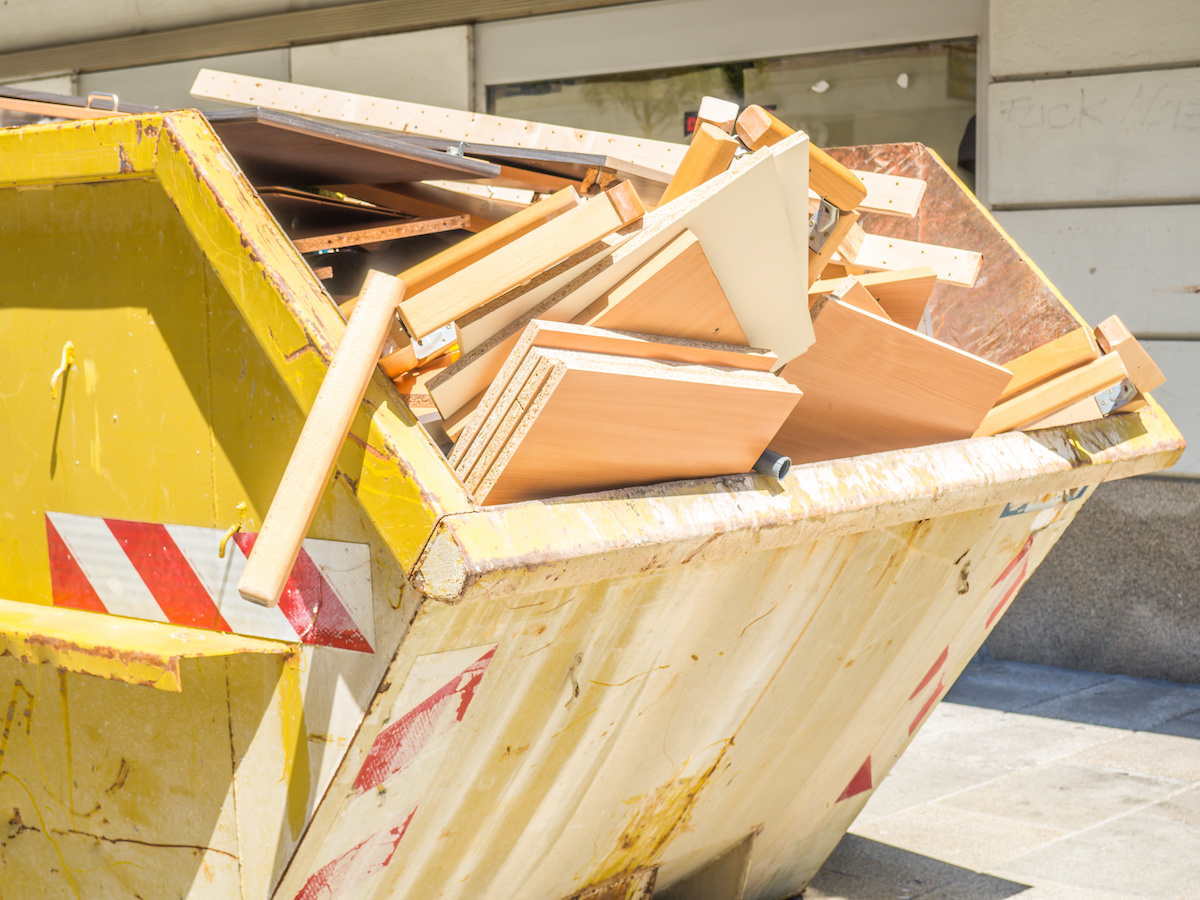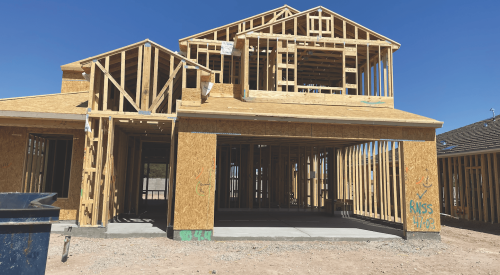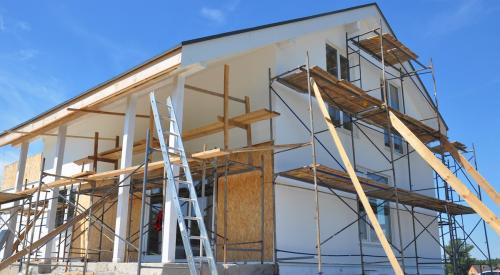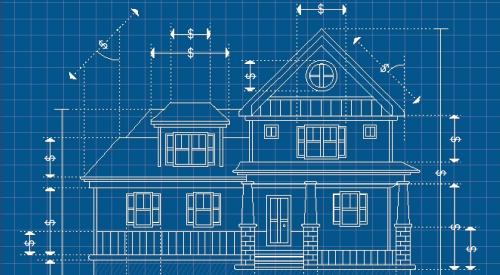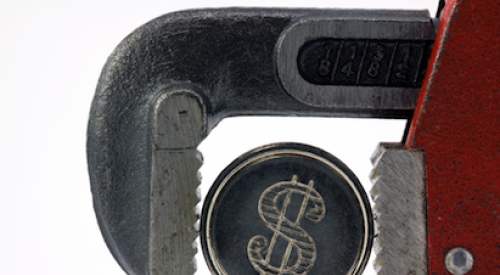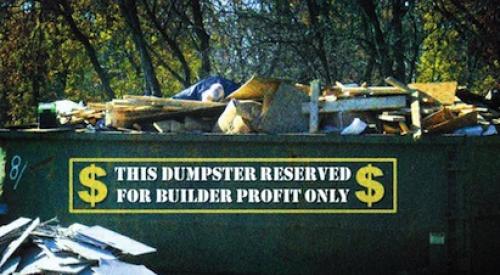Higher lumber prices add an average of $36,000 to the cost of a new single-family home, and design firm Housing Design Matters says builders are still not attempting to limit lumber waste. Lumber is such a hot commodity that there are even reports of lumber packages being stolen off jobsites. Dumpsters can still be found filled to the brim with discarded lumber scraps, writes the firm, but there are three points to keep in mind to limit waste and save money. First, the design process should keep lumber parts in mind. One way Housing Design Matters does this is by designing in two- and four-foot dimensions so fewer sheets of OSB need to be cut.
Fast forward to the next project. The building envelope was 40’ wide! Perfect four increments. Ah, but this house gets brick on all sides. Now we have to reduce the width of the framed house so we can “fit” the brick within the setbacks – meaning the building is 39’ to frame and that last 12” of OSB gets thrown in the dumpster. Not just for one house, but every house in the neighborhood.
One county in our area measures setbacks not to the house but to the overhang. Turns out, this is a huge advantage for keeping the framing in 2’ and 4’ dimensions, especially when the land planners design the lots accordingly. In this case, a 40’ wide frame house sits on a 53’ wide lot allowing for 18” overhangs on both sides. Brilliantly, the frame of the house doesn’t need to adjusted for the masonry.
In a previous blog, it’s hip to be square, I talk about the geometric advantage of a square over a rectangle when it comes to the perimeter – which in the case of house means minimizing sheets of OSB.
ENHANCED CONSTRUCTION DOCUMENTS
Let’s go one step beyond the design and the home and consider the actual construction. There are many in our industry that can supply complete bill of materials for the lumber and where each piece needs to go. This enhanced approach to the construction documents can reduce the lumber waste to less than my kitchen garbage can – thus saving on lumber cost and trash removal. Apply these savings over multiple builds and you could see a huge return on investment.
